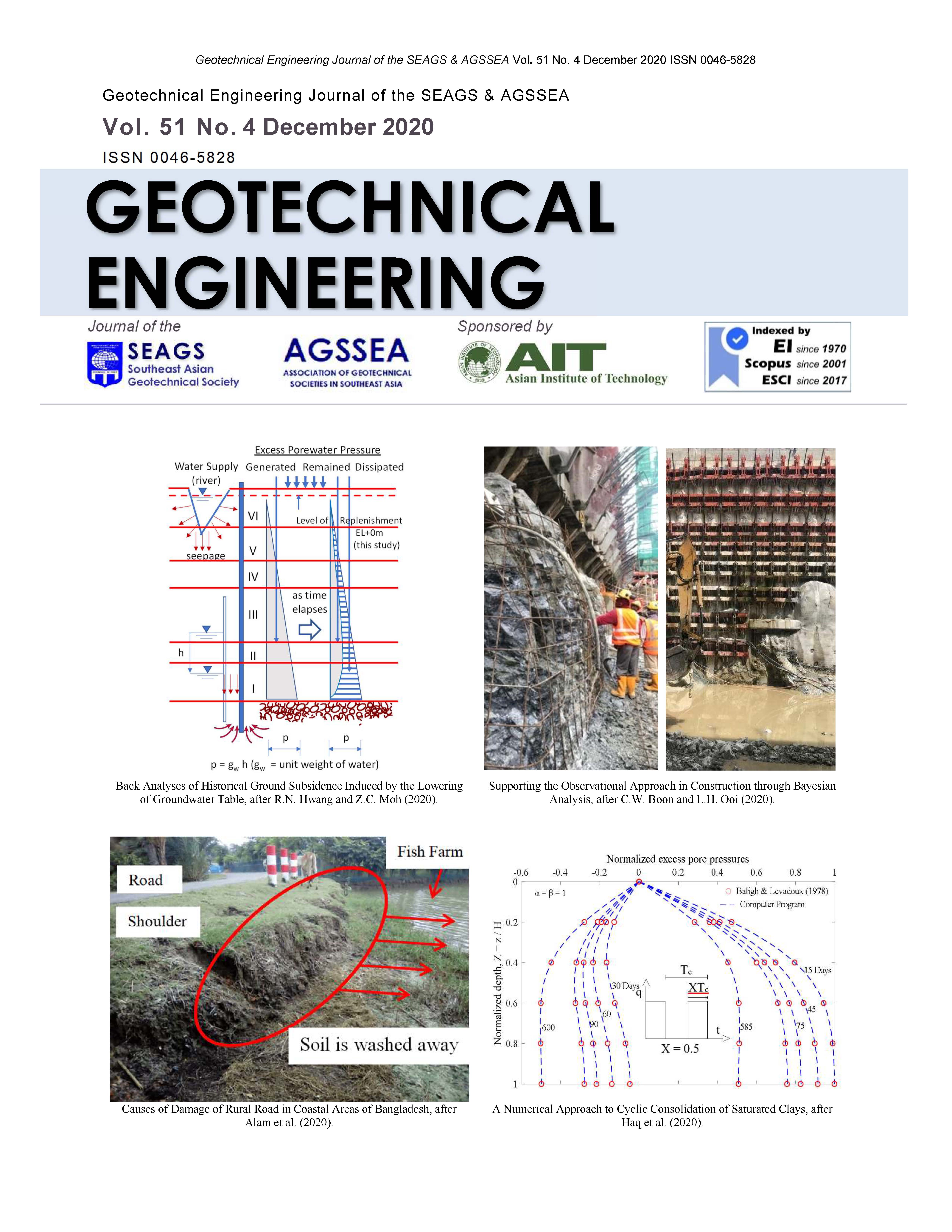Causes of Damage of Rural Road in Coastal Areas of Bangladesh
Main Article Content
Abstract
Developing countries spend a lot of budget each year for elevating, widening or repairing the existing coastal rural roads. These rural roads are constructed for a design life of 10 years. But these low volume roads loose serviceability within two or three years. To find out the reasons of less sustainability, different rural road sites in coastal region were visited by the authors and sandy soil (used for Improved Subgrade) and clayey soil (borrow pit soil used for side slope and shoulder) were collected from 28 sites. Grain size analysis, liquid limit and plastic limit of collected samples were determined. Fineness Modulus (FM) of sandy soils ranged from 0.00 to 0.50 and the most borrow pit soils are lean clay. Dynamic Cone Penetration (DCP) tests were conducted on pavement and shoulder. The test results were analyzed and compared with the Local Government Engineering Department (LGED) recommended DCP values for rural road by employing the AfCAP LVR-DCP software. It is found that the DCP values of base under pavement and shoulders were inadequate. Several reasons were identified which are responsible for less sustainability of rural roads. The reasons are use of unsuitable material, poor compaction, borrow pit location at toe, vehicle movement over soft shoulder, consolidation settlement due to soft soil under road embankment, inadequate design of palisading and slope protection, erosion of side slope by wave action. A new road widening methodology is proposed for making sustainable rural road in coastal areas of Bangladesh.
Article Details

This work is licensed under a Creative Commons Attribution-NonCommercial-NoDerivatives 4.0 International License.
Copyright © 2019 Association of Geotechnical Societies in Southeast Asia (AGSSEA) - Southeast Asian Geotechnical Society (SEAGS).


